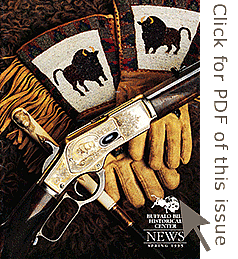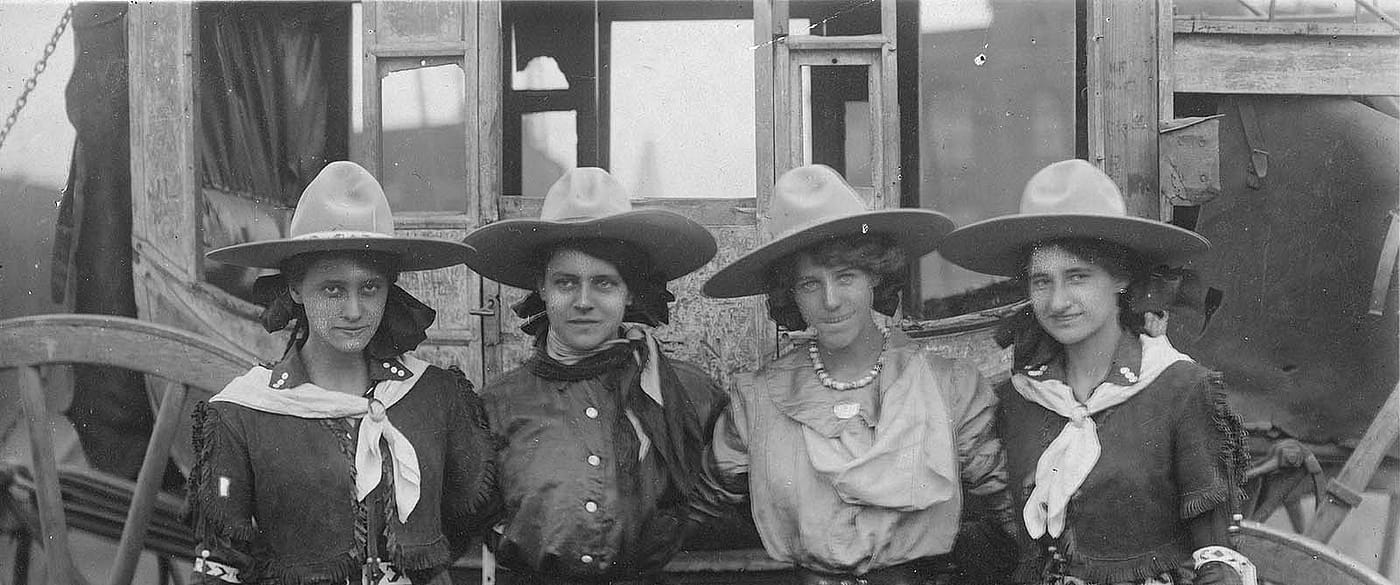
Cowgirl! Earning Her Spurs – Points West Online
Originally published in Points West magazine
Spring 1995
Cowgirl! Earning Her Spurs
By Lillian Turner
Former Director of Public Programs
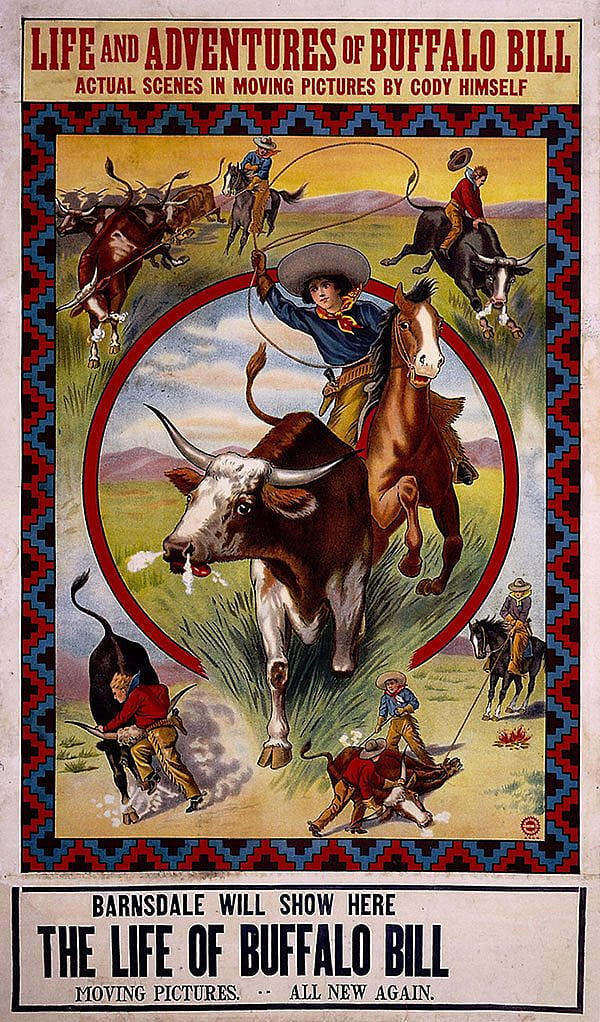
As ranchwoman, trail hand, horse breaker, rodeo competitor, Wild West show celebrity, stuntwoman, singer and songwriter, the cowgirl has made her mark in the history of cattle country, but she has received little recognition.
The cowgirl first came to public attention through dime novels and Wild West shows. By the 1880s, such fictional heroines as Hurricane Nell, Rowdy Kate, and Leadville Lil joined real-life character Calamity Jane in stories of amazing feats of derring-do.
Daring also describes real cowgirls’ accomplishments in the rodeo and Wild West show arenas. As early as 1887, Buffalo Bill featured Mrs. Georgie Duffy, “rough rider of Wyoming.” Bertha Blancett, an “authentic cowgirl” from Colorado, almost won the bronc-riding championship against men in Pendleton in 1911.
Lucille Mulhall, Fannie Sperry Steele, Tad Lucas, Margie and Alice Greenough joined other cowgirls in trick-riding, bulldogging, steer roping, bronc-riding, trick and fancy roping from the 1920s into the 1940s. They became celebrities-stars known nationwide.
Just as cowgirls were riding out of dime novels and into arenas, they also began to appear on screen, though not as heroines. While some female rodeo riders performed as stunt doubles, no cowgirl starred in a western film.
Even Hollywood’s single attempt at producing a singing cowgirl series proved unsuccessful. In 1938, Grand National’s three musical westerns starring Dorothy Page, “a talented woman who rode, roped, shot and sang with skill and enthusiasm,” could not compete with the high-budget films of Roy Rogers and Gene Autry. It was not until Dale Evans, Queen of the West, joined the King of the Cowboys, that young girls in theater audiences had a heroine to look up to. The 1950s brought Roy and Dale to television; in the rush of television westerns that followed, one unique series had a female star, Gail Davis as Annie Oakley, a new “cowgirl” heroine to idolize.
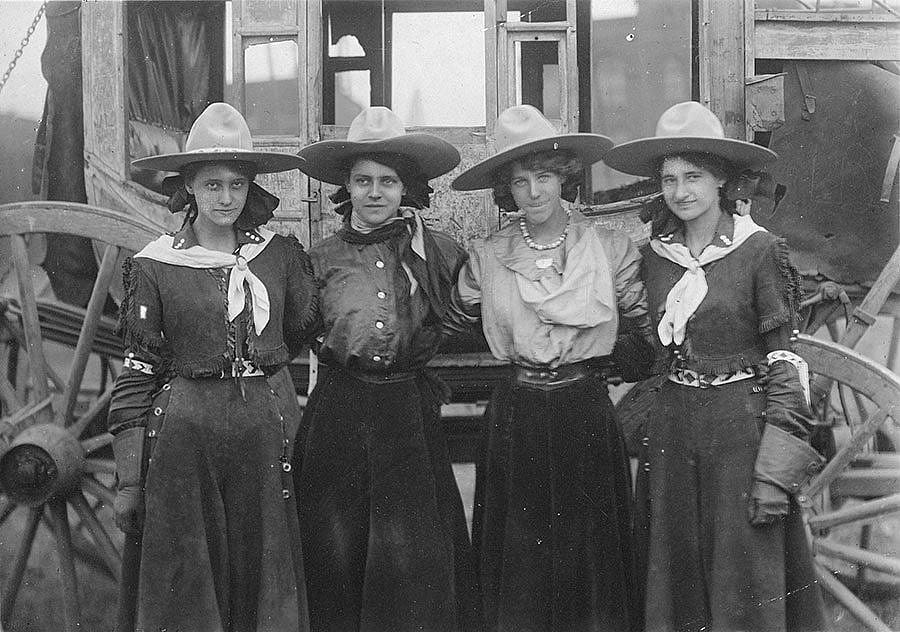
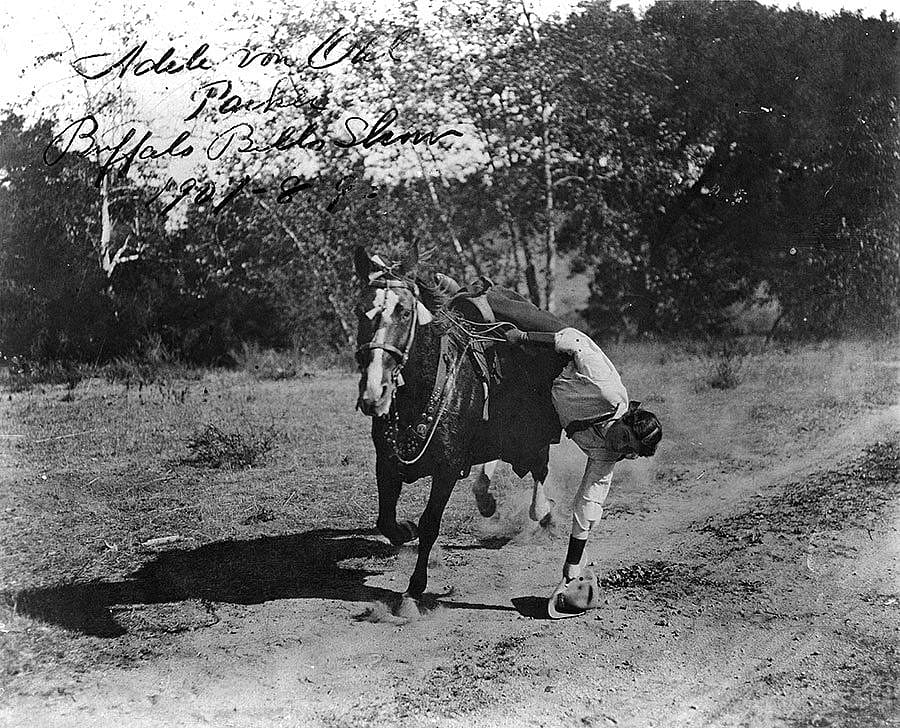
Although Hollywood overlooked the cowgirl, western music did not. Cowgirl sweethearts were sung about from trail drives to Tin Pan Alley. With the rising popularity of Western films from the 1910s to the 1930s, western music gained national attention. Cowgirls were now heard on the radio. Programs such as WLS’s “National Barn Dance” in Chicago featured Millie and Dolly Good, singing and yodeling sisters known as The Girls of the Golden West, as well as Patsy Montana, the first female recording artist to have a million-selling record (1935). This popular song, “I Want to Be a Cowboy’s Sweetheart,” became her trademark.
Western music was enriched by the songs of writer/performers Louise Massey, Jenny Lou Carson, and Cindy Walker, considered by many a “premier writer of Western songs.” The tradition continues today.
Post 088
Written By
Nancy McClure
Nancy now does Grants & Foundations Relations for the Center of the West's Development Department, but was formerly the Content Producer for the Center's Public Relations Department, where her work included writing and updating website content, publicizing events, copy editing, working with images, and producing the e-newsletter Western Wire. Her current job is seeking and applying for funding from government grants and private foundations. In her spare time, Nancy enjoys photography, reading, flower gardening, and playing the flute.
